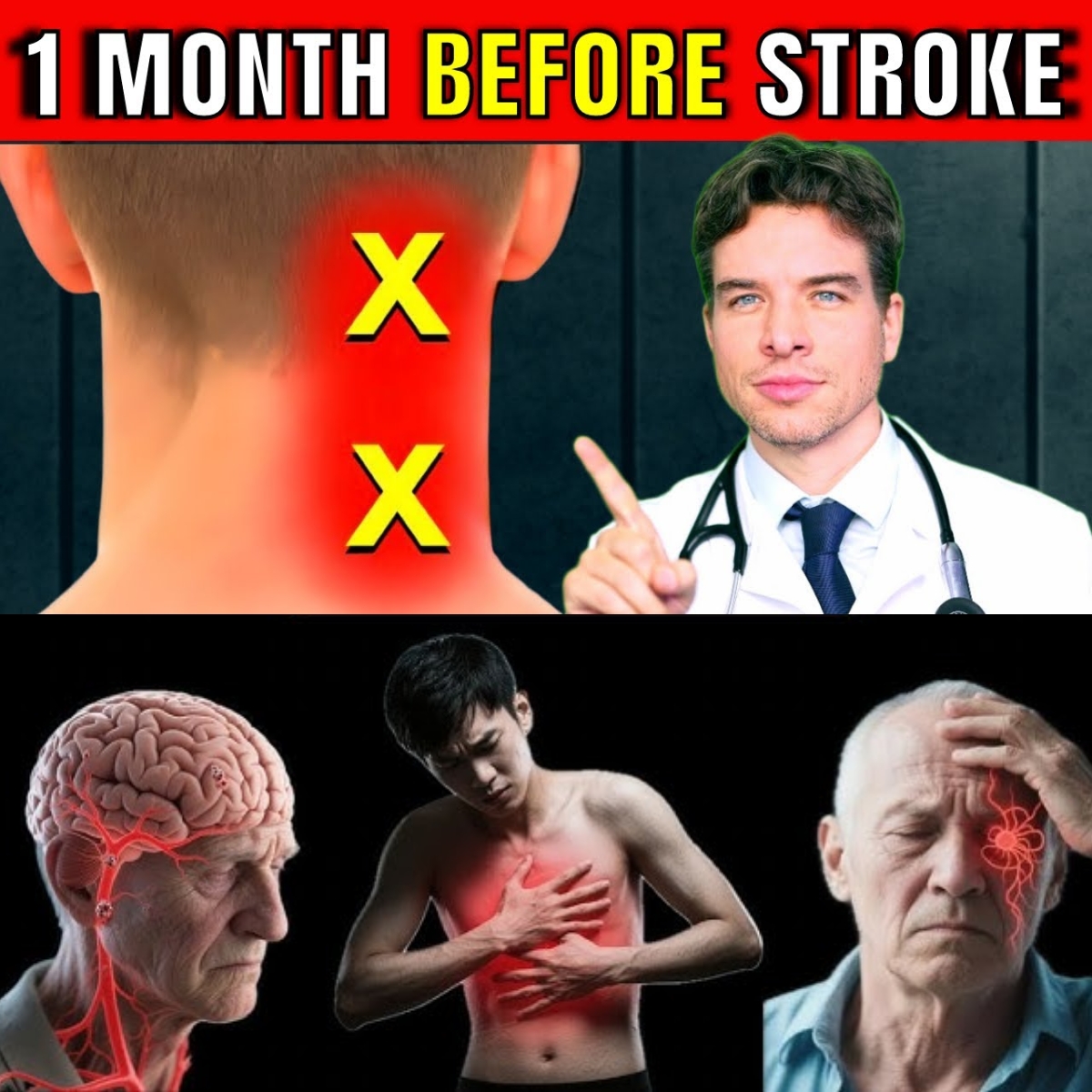Introduction
Every second counts during a stroke. Recognizing the warning signs early and getting immediate medical help can mean the difference between recovery and permanent brain damage—or even death. The World Health Organization states that stroke is one of the leading causes of death and disability globally. That’s why it’s critical to understand the early signs of a stroke, especially the FAST method, to act quickly and effectively.
In this article, you’ll learn the 7 most important early stroke symptoms and what to do if you or someone near you starts showing signs. THIS could save a life—possibly your own.
What Is a Stroke?
A stroke occurs when blood flow to part of the brain is interrupted or reduced. Without oxygen and nutrients, brain cells begin to die within minutes. There are two main types of strokes:
- Ischemic stroke – Caused by a blockage (most common type)
- Hemorrhagic stroke – Caused by bleeding in the brain
There’s also Transient Ischemic Attack (TIA), also called a “mini-stroke,” where symptoms are temporary but just as serious.
1. Sudden Numbness or Weakness (Especially One Side of the Body)
One of the first and most obvious signs is sudden numbness or weakness, often in the face, arm, or leg—especially on one side of the body. You may feel as though your limbs are heavy or unresponsive.
Don’t Ignore:
- Drooping face or uneven smile
- Inability to raise one arm
- Numbness that comes on without warning
2. Trouble Speaking or Understanding Speech
If you suddenly can’t form words, speak clearly, or understand what others are saying, this could be a sign of a stroke affecting the language centers in the brain.
Watch For:
- Slurred or incoherent speech
- Inability to repeat a simple sentence
- Confused reactions to simple questions
3. Vision Problems in One or Both Eyes
A stroke can cause sudden vision loss, blurriness, or double vision. It may feel like a curtain is dropping over your eye, or the world is spinning.
Warning Signs:
- Sudden blurry vision
- Double vision
- Blindness in one eye
4. Sudden Dizziness, Loss of Balance, or Coordination
If someone suddenly feels unsteady, dizzy, or is unable to walk without staggering, this could indicate a stroke in the cerebellum—the brain’s balance center.
Take Note:
- Trouble walking straight
- Unexpected falls or unsteadiness
- Loss of coordination in arms or legs
5. Severe, Sudden Headache with No Known Cause
This is especially common in hemorrhagic strokes, where a blood vessel bursts in the brain. The pain is often described as “the worst headache of my life.”
Symptoms Include:
- Explosive or throbbing headache
- Nausea or vomiting
- Loss of consciousness in extreme cases
6. Confusion or Trouble Thinking Clearly
A stroke may cause someone to suddenly feel disoriented, forgetful, or confused. This symptom is easy to dismiss, but should always be taken seriously, especially if it appears with others on this list.
Signs:
- Inability to recognize familiar people or places
- Trouble following a conversation
- Seeming dazed or out of it
7. Sudden Fatigue or Fainting
Unusual fatigue, fainting spells, or a sudden drop in energy could be an early sign of a stroke, particularly in women. If this happens with other symptoms, it’s time to act fast.
Use the FAST Test to Spot a Stroke
Doctors use the FAST acronym to help people recognize stroke symptoms quickly:
- F – Face Drooping: Is one side of the face numb or drooping?
- A – Arm Weakness: Can the person raise both arms? Is one weak?
- S – Speech Difficulty: Is speech slurred or strange?
- T – Time to Call Emergency Services: If you notice any of these signs, call immediately.
What to Do if You Suspect a Stroke
- Call emergency services immediately – Every minute counts.
- Note the time symptoms started – It helps doctors determine treatment options.
- Do NOT give food, drink, or medicine – This could complicate treatment.
- Stay calm and keep the person safe – Lay them down and keep them comfortable.
Final Thoughts
A stroke is a medical emergency, but fast action can minimize brain damage and save lives. Learn to spot the 7 early warning signs of a stroke, and remember the FAST test. Share this information with friends and family—it might one day save someone you love.
Introduction
Every second counts during a stroke. Recognizing the warning signs early and getting immediate medical help can mean the difference between recovery and permanent brain damage—or even death. The World Health Organization states that stroke is one of the leading causes of death and disability globally. That’s why it’s critical to understand the early signs of a stroke, especially the FAST method, to act quickly and effectively.
In this article, you’ll learn the 7 most important early stroke symptoms and what to do if you or someone near you starts showing signs. THIS could save a life—possibly your own.
What Is a Stroke?
A stroke occurs when blood flow to part of the brain is interrupted or reduced. Without oxygen and nutrients, brain cells begin to die within minutes. There are two main types of strokes:
- Ischemic stroke – Caused by a blockage (most common type)
- Hemorrhagic stroke – Caused by bleeding in the brain
There’s also Transient Ischemic Attack (TIA), also called a “mini-stroke,” where symptoms are temporary but just as serious.
1. Sudden Numbness or Weakness (Especially One Side of the Body)
One of the first and most obvious signs is sudden numbness or weakness, often in the face, arm, or leg—especially on one side of the body. You may feel as though your limbs are heavy or unresponsive.
Don’t Ignore:
- Drooping face or uneven smile
- Inability to raise one arm
- Numbness that comes on without warning
2. Trouble Speaking or Understanding Speech
If you suddenly can’t form words, speak clearly, or understand what others are saying, this could be a sign of a stroke affecting the language centers in the brain.
Watch For:
- Slurred or incoherent speech
- Inability to repeat a simple sentence
- Confused reactions to simple questions
3. Vision Problems in One or Both Eyes
A stroke can cause sudden vision loss, blurriness, or double vision. It may feel like a curtain is dropping over your eye, or the world is spinning.
Warning Signs:
- Sudden blurry vision
- Double vision
- Blindness in one eye
4. Sudden Dizziness, Loss of Balance, or Coordination
If someone suddenly feels unsteady, dizzy, or is unable to walk without staggering, this could indicate a stroke in the cerebellum—the brain’s balance center.
Take Note:
- Trouble walking straight
- Unexpected falls or unsteadiness
- Loss of coordination in arms or legs
5. Severe, Sudden Headache with No Known Cause
This is especially common in hemorrhagic strokes, where a blood vessel bursts in the brain. The pain is often described as “the worst headache of my life.”
Symptoms Include:
- Explosive or throbbing headache
- Nausea or vomiting
- Loss of consciousness in extreme cases
6. Confusion or Trouble Thinking Clearly
A stroke may cause someone to suddenly feel disoriented, forgetful, or confused. This symptom is easy to dismiss, but should always be taken seriously, especially if it appears with others on this list.
Signs:
- Inability to recognize familiar people or places
- Trouble following a conversation
- Seeming dazed or out of it
7. Sudden Fatigue or Fainting
Unusual fatigue, fainting spells, or a sudden drop in energy could be an early sign of a stroke, particularly in women. If this happens with other symptoms, it’s time to act fast.
Use the FAST Test to Spot a Stroke
Doctors use the FAST acronym to help people recognize stroke symptoms quickly:
- F – Face Drooping: Is one side of the face numb or drooping?
- A – Arm Weakness: Can the person raise both arms? Is one weak?
- S – Speech Difficulty: Is speech slurred or strange?
- T – Time to Call Emergency Services: If you notice any of these signs, call immediately.
What to Do if You Suspect a Stroke
- Call emergency services immediately – Every minute counts.
- Note the time symptoms started – It helps doctors determine treatment options.
- Do NOT give food, drink, or medicine – This could complicate treatment.
- Stay calm and keep the person safe – Lay them down and keep them comfortable.
Final Thoughts
A stroke is a medical emergency, but fast action can minimize brain damage and save lives. Learn to spot the 7 early warning signs of a stroke, and remember the FAST test. Share this information with friends and family—it might one day save someone you love.

